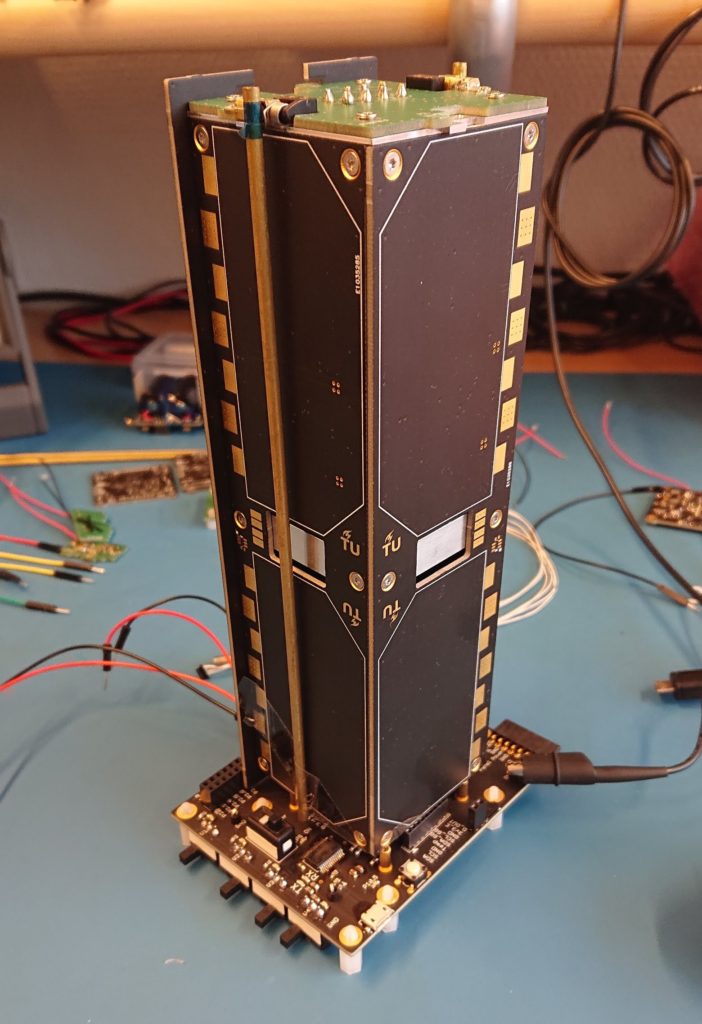Unknown to many, the top of the high-rise EWI-building along the Mekelweg hosts a full-fledged multi-band satellite ground station. It was and is used to control Delfi C3, the very first satellite of a Dutch university, launched in 2008 and still operational and its successor Delfi-n3Xt (pronounced ‘Delfi-next’), launched in 2013. Both successful missions were based on so-called CubeSats with a standardized cube size of (multiples of) 10 cm.
Soon, an even smaller TU Delft satellite, Delfi-PQ, will be launched into space, a so-called PocketQube with standardized cube size of 5 cm. Delfi-PQ has a volume of about a factor of 8 smaller than its larger brothers and has a mass of only 600 grams. The project is managed by Alessandra Menicucci of the TU Delft Space Engineering department and involves students, for example in designing the attitude control system for determining the celestial orientation of the satellite.
While CubeSats were originally utilized for education and demonstration of new technology, they have become an important commercial factor and are nowadays being used for example for remote sensing of the atmosphere, Earth Observation, tracking of ships and for communication. Similar applications are expected with PocketQubes in the future. There are still only a few PocketQubes in space and TU Delft is one of the forerunners in this area of extreme miniaturisation of satellites.
